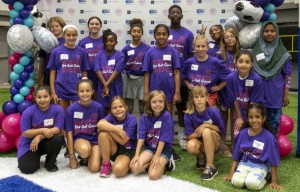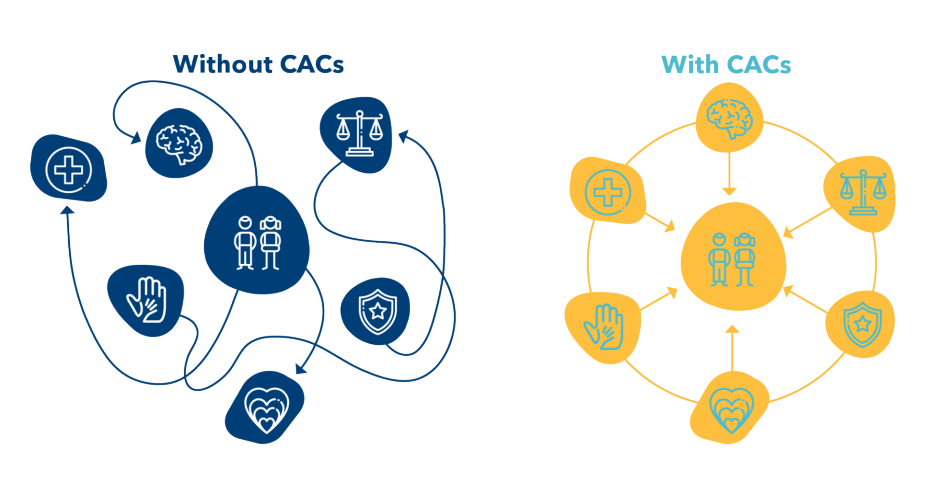The Baldy Center Blog 2022 - 2023

The Baldy Center Blog features interdisciplinary perspectives on research and current events from UB scholars and others whose work intersects with law, legal institutions, and social policy.
Since Fall 2020, The Baldy Center has highlighted UB scholarly research at the intersections of law, legal institutions, and social policy through our online media programs. The Baldy Center has a long tradition of supporting and catalyzing new research on critical topics, and the Center is excited to continue mobilizing UB scholar insights.
On this page you will find blog posts for the 2022-2023 academic year.
Spring 2023 Introduction
By Simon Honig (Podcast Host) and Julia Merante (Blog Host)
In Spring 2023, The Baldy Center Blog and Podcast features a variety of discussions that offer perspective on one topic, Title IX.
On June 23, 1972, President Nixon signed Title IX of the Education Amendments into law, stating that: “No person in the United States shall, on the basis of sex, be excluded from the participation in, be denied the benefits of, or be subjected to discrimination under any education program or activity receiving Federal financial assistance.”
As a civil right, Title IX enabled millions of women and girls to gain the same scholastic opportunities that men had already enjoyed for decades, leading to an over 450% increase in women’s sports participation since the ratification date. Title IX prohibits discrimination on the basis of sex, protects victims of sexual harassment and assault, while likewise empowering individuals to safely express their sexual orientation and gender identity.
The scope of Title IX is broad, yet the public’s understanding of this law often pertains to women’s increased participation in sports. The statistics are astounding. Women have gained significant athletic attention and opportunities, from high school through college, and even in professional sports. There are inequities that Title IX has not yet cured, including colleges that allocate more economic resources to men’s teams over women’s, and reduce the number of scholarships for women in other disciplines. Guests on our blog and podcast will discuss the adverse effects of Title IX, such as backlash politics in the media surrounding women’s collegiate and professional athletics.
This season's multimedia aims to analyze Title IX’s advancements and insufficiencies. By illuminating its progress, as well as its pitfalls, Title IX’s historical achievement and capacity for improvement will become clear.
Post 38. Riana Pryor: Equitable Medical Care for High School Student Athletes
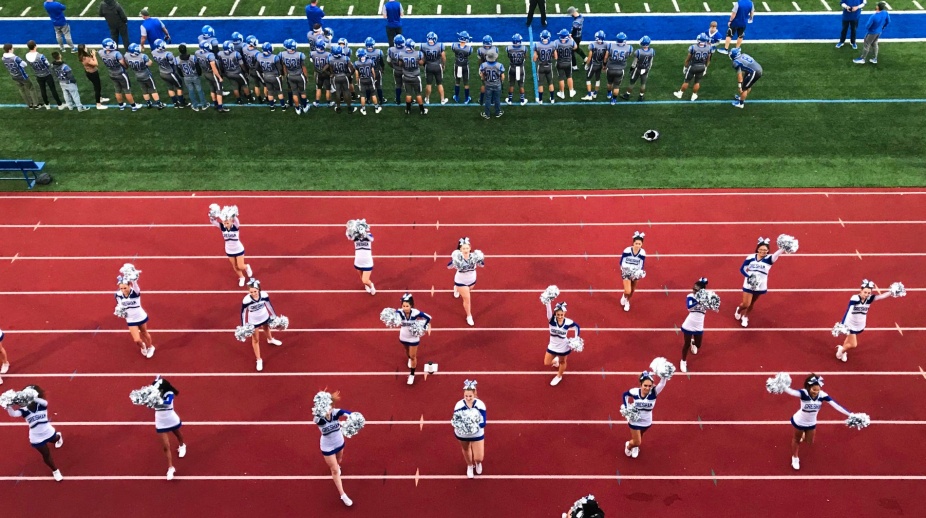
Photograph courtesy of Rajiv Perera on Unsplash.
Published April 13, 2023
Blog Author: Riana R Pryor, PhD, ATC, Assistant Professor, Exercise and Nutrition Sciences, University at Buffalo
Blog Post: Equitable Medical Care for High School Student Athletes
Keywords: Education Policy, Gender, Law, and Society, Human Rights, Civil Rights, Inequality, Law and Society, Social Justice, Social Change
Sports participation comes with an inherent risk of athletic injuries, ranging from mild to severe across all sports. Of the over 7 million high school students participating in school-sanctioned sports, approximately 2 million sports injuries occur annually. Football, cheerleading, wrestling, gymnastics, girls basketball, and girls soccer place student athletes at the highest risk of severe injury. For example, cheerleading, a female-dominated sport, accounts for two thirds of all catastrophic injuries: skull fractures, neck injuries, and brain injuries. When directly comparing girls and boys sports teams, girls sustain a higher severe-injury rate than boys, and when a severe injury occurs, girls are more likely to require surgery than boys.
Athletic trainers play an essential role in the safety of student-athletes and have been established as an appropriate healthcare professional to provide medical care to student athletes. These professionals assess, treat, and rehabilitate athletic injuries—including those classified as severe and life-threatening. However, despite the many benefits of athletic training services, one-third of high schools fail to provide this medical care to their student athletes.
After conducting a survey of all high schools nationwide—public, private, technical, magnet, charter, special-needs, gender-specific, and more—statistics indicated that, out of the schools which do provide athletic trainers, 88% do not provide these services to all student athletes. Instead, certain sports are prioritized over others, and our survey found that many schools chose to only provide medical care to football student-athletes. This decision leaves other high-risk sports–for both girls and boys–without adequate treatment options. This inequity of appropriate medical care is a concern across sports considering the long-term health consequences of improperly treated injuries, including persistent pain and impairment, osteoarthritis, and reduced physical activity, which can lead to negative metabolic and cardiovascular health issues.
Although two thirds of high schools provide at least some access to athletic training services, critical improvements must be made concerning all student athletes participating in boys and girls sports. Key stakeholders including state government representatives, athletic directors, school administrators, school booster clubs, parents, and athletes should self-reflect and unite to find solutions to this lack of equitable medical care in high school athletics.
Related Link: See the summary of results from the nationwide school survey, here.
Post 37. Kathy Jamil: Policy meets practice — Title IX and WNY Girls in Sports
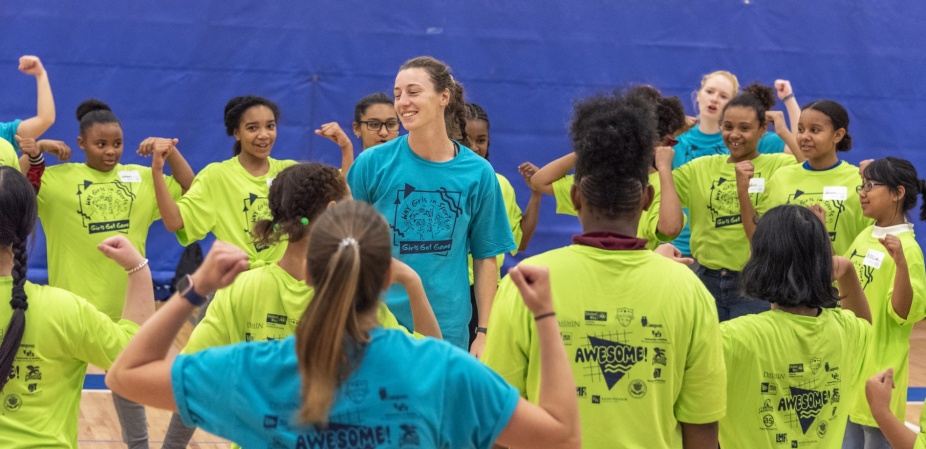
Photograph courtesy of the United Way of Buffalo & Erie County
Published March 31, 2023
Blog Author: Kathy Jamil, Chief Program Officer, United Way of Buffalo & Erie County
Blog Post: Policy meets practice – Title IX and WNY Girls in Sports
Keywords: Culture and Society, Education Policy, Gender, Law, and Society, Human Rights, Civil Rights, Inequality, Law and Society, Social Justice and Social Change
Prior to the signing of Title IX into law in 1972, only 1 in 27 girls played high school sports. The primary physical activities for girls were cheerleading and square-dancing. There were virtually no college scholarships for female athletes, and female college athletes received only two percent of overall athletic budgets.
Since Title IX, there has been real growth in the number of women who participate in sports, receive scholarships, and benefit from increased budgets. But yet, disparities persist. After fifth grade, a larger percentage of boys play sports than girls—this difference only grows with age. Middle schools and high schools still offer fewer female sports compared to male sports. And, there are fewer female leaders in sports, reducing the chance that women’s and girls’ athletic involvement will be championed or reinforced.
Why do sports matter? Research suggests that girls who are involved in sports are four times more likely to achieve better than an 85% average in high school. Girls who are not involved in sports are six times more likely to experience clinical depression. Finally, children who participate in sports are more likely to exercise, eat healthy, and maintain an active lifestyle even after the sport’s season has ended.
Enter WNY Girls in Sports.
WNY Girls in Sports was first established by Mary Wilson, wife of Ralph C. Wilson, Jr., for the purpose of improving the lives of girls in Buffalo through physical activity and sports. She envisioned a program that would empower girls and young women to be healthy, confident, and self-aware through their participation in sports and physical activity.
Twice a year since 2006, this initiative of United Way of Buffalo & Erie County introduces 250 girls ages 9-12 to sports that they may not otherwise experience. Over 150 volunteers ranging from high school and college athletes to local coaches to professional athletes operate seven sports sampling stations which provide instruction and mentorship and create a fun and encouraging environment for girls to explore new sports.
Photograph courtesy of the United Way of Buffalo & Erie County
With WNY Girls in Sports, United Way partners with public schools and community-based organizations to prioritize access and pathways for girls from underserved neighborhoods. This energizes participation in women’s and girls’ sport programs at the local, high school, and collegiate level.
For many of the girls, this day contains many firsts. It is often their first time stepping onto a college campus, learning how to swing a golf club or kick a soccer ball, or igniting the spark that will fuel their love of sports for years to come.
- Beyond these biannual sports sampling events, United Way offers two additional opportunities to deepen girls’ relationships with sports. First, United Way organizes multi-week clinics throughout the year, each focused on a single sport so that girls can learn additional and more detailed skills of a specific sport. At the end of the clinic, each girl receives her own sporting equipment to progress her athletic journey. Second, beginning in 2023, United Way also launched an official WNY Girls in Sports membership to keep girls and their families connected with future WNY Girls in Sports opportunities. Girls who attend Girls In Sports events are invited to become members and get notified of upcoming clinics and events. United Way of Buffalo & Erie County is currently partnering with United Ways and universities in neighboring counties to pilot their own local Girls in Sports events so that this model may grow across the Western NY region.
At United Way, we know that change doesn’t just happen. It is created.
Laws such as Title IX are critical to advancing systemic change. But, overcoming inequities often requires strong policies and in-action efforts. When we invest in practical solutions that support the health and education of young women and girls—and when we build their confidence and leadership skills for the future—we are helping to break a cycle of hardship that affects up to 40% of families in our Western New York community.
Related Links
- WNYGIS Sport Sampling Event: Saturday, April 29, 2023 (UB Alumni Arena). To learn more, contact UWBEC: CHANGE STARTS HERE.
- Are you a woman who is interested in volunteering? Visit: Volunteer WNY

Published February 28, 2023
Author: Katerina Bezrukova, PhD, Chair and Associate Professor, Organization and Human Resources, School of Management
Blog Post: Those 37 Words and What Comes Next
Key Words: Civil Rights, Title IX, Athletics.
Title IX stands as a great example of the power of a few, well-chosen words. Those 37 words are mostly known for increasing access to women’s athletic programs, guaranteeing female participation in “any education program or activity receiving Federal financial assistance.” The Women’s Sports Foundation reported that, since Title IX’s passage in 1972, female sport participants at NCAA schools increased from just under 30,000 to 219,000 in 2019. Over the same period, male participation grew from 170,000 to 279,000.
Remarkably, those 37 words impact women in sports as well. Title IX increases female participation at every level and at every type of educational attainment. For example, in 1972 10,400 men graduated from medical school; in 2019, it was 10,800. For women, that number increased tenfold from 1,653 to 11,611.
Can there be more good yet to come from those 37 words? Title IX has profoundly increased women participation in many areas; however, there is more work to do to make the statute more equitable in several areas.
First, increasing female participation in sports has exposed other inequities concerning injuries. We know relatively little about differences in injury patterns and recovery for females. For example, it is not known why female soccer, cycling, and other athletes seem much more likely to suffer concussions and take longer to recover from them than their male counterparts. This gap in knowledge about treating injuries in female athletes and their response has proved debilitating for some women athletes, sometimes with tragic outcomes.
Second, Asian, African-American, Hispanic, and disabled women remain under-represented in many aspects of education including athletics. The same study referenced above by the Women’s Sports Foundation showed that in 2019-2020, male athletes received $252 million more in athletic scholarships than female athletes.
These disparities extend beyond monetary resources, too, existing at the high school level concerning accessibility. A 2015 study by the National Women’s Law Center reported that in heavily (at least 90%) minority high schools, there were 25 spots on sports teams for every 100 students; yet in heavily white (90% or more) high schools, there were 58 spots for the same number of students. It is not just one attribute (e.g., being a woman) that is at play, but a combination of demographics and race could be contributing to a lot of gender-based disparities.
So, while these 37 words have inspired and done so much good, we have a lot more to learn and do to achieve true equity in educational opportunity. It will require a well thought out system with committed participation from schools, government, and community.
Related Websites:
- National Women's Law Center
- Women’s Sports Foundation
- The 14th Amendment and the Evolution of Title IX
- U.S. Department of Education - Title IX - Protecting all students
- U.S. Health & Human Services - Title IX Education Amendments
Fall 2022 Introduction
In Fall 2022, in addition to catalyzing scholarship synthesized from professors and peers at UB, The Baldy Center multimedia includes the voices of community leaders and expert practitioners. This collaboration remains true to the Center's mission, while evolving the blog and podcast into tethered elements telling a story of theory, law, and mobilization, focused on the theme of Domestic Violence.
Blog authors engage with DV laws and policies. The Baldy Center, as the host of this critical conversation, has invited scholars in the UB community and Western New York to participate in blogs and podcasts and share their thoughts on urgent DV topics. Erin's Law, a regulation that would mandate child sexual abuse prevention, is the main topic of this interdisciplinary discussion. We hope that this focus will catalyze critical thinking to better serve the legal and social policy spheres.
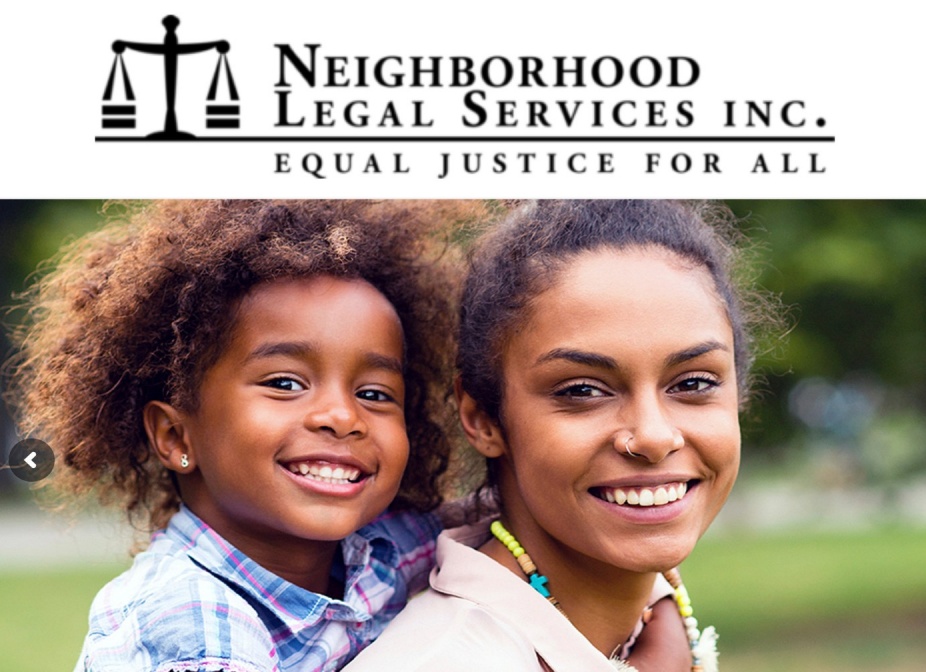
Imagery courtesy of Neighborhood Legal Services, Inc, Family Unit (website).
Published November 30, 2022
Blog Author: Lizzy Vinal (UB Alum) Neighborhood Legal Services, Inc., Family Unit; Student Attorney UB Law, Family Violence and Women’s Rights Clinic
Blog Title: Supporting Erin’s Law — Children and Domestic Violence
Keywords: Social Justice and Social Change, Law and Social Science, Inequality, Human Rights, Civil Rights, Gender, Law, and Society, Family and Family Law
Domestic Violence (DV) has been a hidden problem for many years: people did not want to talk about what was going on behind closed doors. Many still fail to understand how someone could find themselves stuck in a cycle of violence, and a frequent comment about DV victims and survivors is: “why don’t they just leave?”
This question ignores a large set of victims: children. Children suffer from DV in two main ways. First, parents, relatives, peers, teachers, coaches, religious leaders—or anyone else—abuse the child directly. Second, children are exposed to violence in the home, even if not physically victimized, because witnessing family violence affects children and, primarily, infants. When abuse exists in the home, especially when one parent is abusing the other, children often do not know whom to go to or how to stop it.
I was a former student attorney in UB Law’s Family Violence and Women’s Rights Clinic, and I witnessed firsthand how children were used as pawns in abusive households. For example, abusers may tell their victim that removing the child from the home is hurting the child. Or, abusers may threaten the victim, ensuring that they will never see their child again.
One abuser I encountered held the baby while abusing the baby’s mother. Another used the children to communicate with the other parent, which violated the Order of Protection. Children might not have bruises or broken bones indicating abuse, yet the observance of abuse and being involved in it can injure them internally for the rest of their lives.
Informative education can help children experiencing abuse. Erin Merryn, the founder of Erin’s Law, gave a speech on identifying and disclosing sexual abuse to a school, after which five children reported being the victims of abuse. Erin served as someone children could confide in outside the home. Situations like this illustrate that children should be learning how to protect themselves and communicate their concerns at school because, oftentimes, schools are second homes for children. When children are taught how to spot red flags early, they can better protect themselves from abusers and teach their friends—who haven’t had this educational opportunity—the same. Ideally, however, all children, teachers, and school staff should receive training to identify and prevent abuse.
Education like Erin’s Law is the foundation for prevention and mitigation, and similar programs can—and will—protect the children of our generation, allowing them to grow into the leaders of the next.
Related Websites:
Neighborhood Legal Services, Inc, Family Unit
UB Law, Family Violence and Women’s Rights Clinic
Post 34. Kristen Holderle: The HEAL Collaborative — A Medical-Legal Partnership
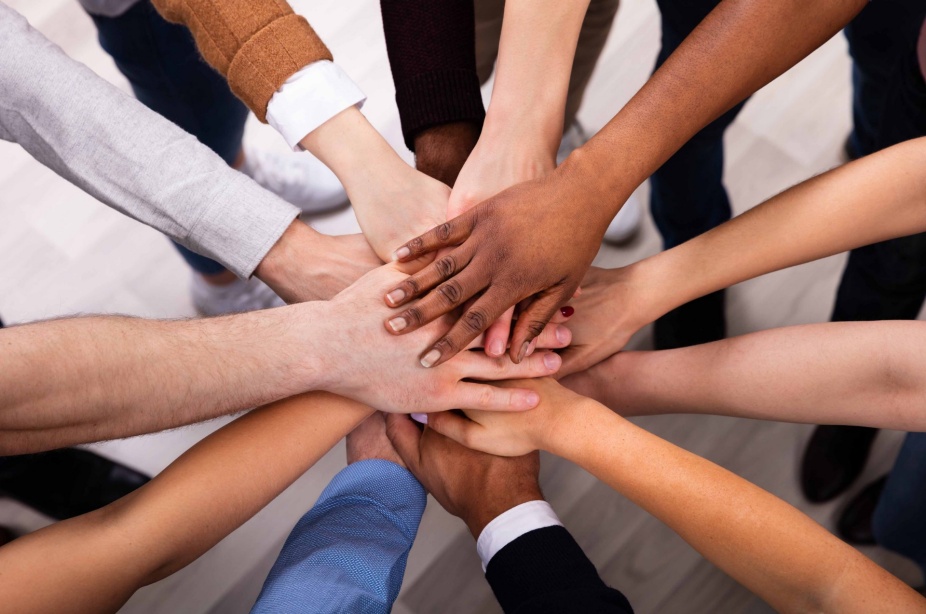
Published November 17, 2022
Blog Author: Kristen Holderle, PhD, Assistant Professor, Director of the HEAL Collaborative, University of Rochester Medical Center
Blog Title: The HEAL Collaborative: A Medical-Legal Partnership to address the biopsychosocial needs of interpersonal violence survivors
Keywords: Social Justice and Social Change, Law and Social Science, Inequality, Human Rights, Civil Rights, Gender, Law, and Society, Family and Family Law
Intimate Partner Violence (IPV) is a public health issue affecting approximately 1 in 4 women and 1 in 10 men during their lifetime. On a national scale, estimates suggest that IPV accounts for 20% of violent crime.[1] IPV is associated with the loss of 8 million days of paid work and 5.6 million days of household productivity, with financial costs in excess of 8.3 billion dollars. On an individual scale, IPV is associated with physical (e.g., asthma, migraines) psychological (e.g., anxiety, depression, PTSD, suicidal thoughts/behaviors) and social (e.g., homelessness, over/under use of healthcare) effects.
Within families, exposure to IPV is distressing to children and associated with mental health problems in childhood and later life. Effects of IPV have even been found in-utero, with women who experienced IPV when pregnant having infants with more observable symptoms of trauma or PTSD.[2]
IPV generates short and long term effects for children exposed to it. According to The National Child Traumatic Stress Network, immediate reactions in children can include increased anxiety, sleeplessness, nightmares, difficulty concentrating, hyperactivity, separation anxiety, worry about their safety or the safety of the parent, and increased aggression. Long-term effects include physical health problems, alcohol or substance use disorders, and/or emotional difficulties in adulthood.[3]
The impact of child exposure to IPV can be thought of in terms of both individual and relational factors. Individual factors include the child’s specific trauma response which might include mental health problems, cognitive, social, or developmental delays. Relational factors include the development of poor attachment styles or learned maladaptive behaviors (e.g., viewing violence as an appropriate way to resolve disputes). Childhood exposure to serious IPV is associated with offending as an adult.[4] Furthermore, witnessing or experiencing violence as a child puts one at risk for future IPV victimization, perhaps due to learned patterns about what is ‘acceptable’ in relationships or the disruption of the child’s overall social development and peer group. As a result, detection and intervention at an early age becomes imperative to combat these short and long term effects.
The HEAL Collaborative was established in October 2016 as a Medical-Legal Partnership (MLP) to unite medical and legal professionals with community partners for a coordinated, interprofessional approach to IPV care.[5]
Our partnership occurred between the University of Rochester Medical Center, two legal aid societies, a community domestic violence shelter, and primary care. Its mission is to offer trauma-focused, accessible, and inclusive services that include education, connection to resources, advocacy, counseling, and healthcare.
The HEAL Collaborative offers specific services including trauma-informed assessment, safety planning, psychotherapy, linkage to community resources, and clinician training on assessing for IPV. These services are directed by trained team members:
All referrals are handled by our physician support specialist who is trained on aspects of confidentiality and safety for IPV survivors. The HEAL social worker completes a biopsychosocial assessment and safety plan and facilitates referrals to the appropriate social, health, and legal resources. HEAL psychological services include general psychotherapy/coping skills and evidence-based trauma-focused interventions. HEAL therapists are available for consultation with other clinicians on IPV-related concerns. Primary care support involves evidence collection (e.g., body diagrams and photographs). On-site legal clinics allow patients to see IPV attorneys in a safe and familiar environment. Our IPV Advocate is an employee of our community partner who is fully embedded and integrated into the clinic and medical record, allowing for shared documentation and collaboration. The advocate links survivors to community resources, facilitates orders of protection, provides court escorts, and completes safety planning. Importantly the advocate is able to assess patients within the outpatient clinic, inpatient medical and psychiatric units, and the emergency department. This interprofessional team stays connected through regular meetings, including quarterly meetings with all community partners to discuss clinic patterns and needs, obtain updates on local and national IPV trends, and review legislature impacting the IPV community.
NOTES
[1] National Coalition Against Domestic Violence (2020). Domestic Violence Retrieved from domestic_violence-2020080709350855.pdf (speakcdn.com)
[2] Carlson, J., Voith, L., Brown, J. C., & Holmes, M. (2019). Viewing children’s exposure to intimate-partner violence through a developmental, social-ecological, and survivor lens: The current state of the field, challenges, and future directions. Violence Against Women, 25 (1) 6-28.
[3] Effects | The National Child Traumatic Stress Network (nctsn.org)
[4] Hamby, S., Findelhor, D., Turner, H., & Ormrod, R. (2011). Children’s Exposure to Intimate Partner Violence and Other Family Violence. Retrieved from 232272.pdf (ojp.gov)
[5] Poleshuck E, Wittink MN, Crean H, Juskiewicz I, ReQua MA, Cerulli C (2021). A biopsychosocial and interprofessional approach to the treatment of family and intimate partner violence: It takes a village: Frontiers in Psychiatry 17 (12): doi: 10.3389/fpsyt.2021.738840. PMID: 34899417; PMCID: PMC8652581.
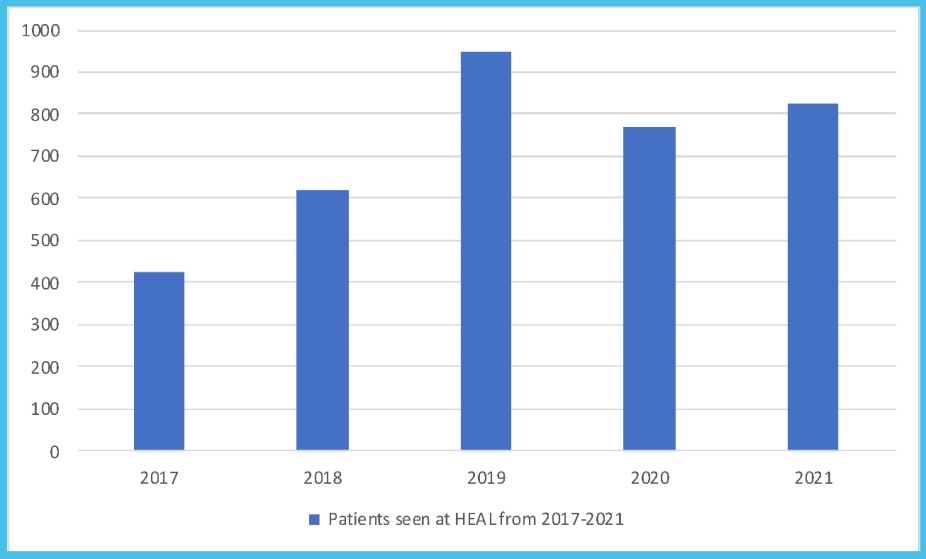
Chart courtesy of the author.
Post 33. Megan Dudziak: It’s Every Adult's Responsibility – Erin’s Law – New York State
Illustration courtesy of National Children’s Alliance (NCA).
Published November 7, 2022
Blog Author: Megan Dudziak, Education and Outreach Coordinator, Child Advocacy Center at BestSelf Behavioral Health
Blog Title: It’s Every Adults Responsibility: Erin’s Law – New York State
Keywords: Social Justice and Social Change, Law and Social Science, Inequality, Human Rights, Civil Rights, Gender, Law, and Society, Family and Family Law.
About 1 in 4 girls and 1 in 13 boys in the USA experience child sexual abuse every year. Alarmingly, 91% of the time the abuser is a known and trusted adult to the child. (Source; CDC.gov). Even more jarring is the fact that child sexual abuse is an underreported problem, making these statistics an underrepresentation of the transgressions against America’s children.
Overall, there is a general reluctance of most adults to talk about this topic. The silence surrounding child sexual abuse has grown into a nationwide epidemic. Most adults agree that their number one priority is for children to be safe. However, when we shy away from discussing difficult topics with children, we also avoid opportunities to talk about body safety which will reduce the likelihood of them becoming victims. In fact, the CDC indicates that education about abuse may successfully prevent 95% of violence against children.
In August of 2019, New York State signed Erin’s Law into legislation (Chapter 187 of the Laws of 2019). It was the 37th state in the union to pass this legislation. It is pending in 12 other states. The law is named after the survivor, Erin Merryn, who introduced this legislation in her home state of Illinois. Erin is an abuse survivor and activist against child sexual abuse. She has advocated for similar laws in every state and territory of the United States for over a decade.
Ideally, the law was proposed by Ms. Merryn to provide this mandate for students in pre-kindergarten through 12th grades, to professionals who work at the schools, and to the parents/guardians of all children. The main outcome of this education is for children to understand body autonomy, body boundaries, safe adults vs unsafe adults, safe touch vs unsafe touch, and to know what to do and who to go to if you or another child may be a victim. It also assists children in reporting to adults or other children who may be posing a risk. In fact, 40% of child sexual abuse involves a peer as the abuser (source: CDC.gov)
New York is one of several states to approve this law with modifications. The law went into effect on July 1, 2020, in New York, at the height of the Covid-19 Pandemic–a time when school administrators were struggling with providing education to students in the safest environment possible. Many were not even aware of this mandate until contacted by local advocates and professionals in their area.
The Child Advocacy Center in Buffalo, New York–a program of BestSelf Behavioral Health–took to email and written campaign in the summer of 2020 to update all the public school districts in the Erie County region of the passed legislation. The CAC provided resources about the mandate and opportunities to collaborate with the district to ensure this information was provided to professionals, community members, and students. The programs are offered to all groups at no cost. The New York State Education Department (NYSED) established a website where those interested in learning more about what the mandate requires, about resources to support the mandate, and about agencies to contact to provide the training to adults and children. (Erin's Law |New York State Education Department (nysed.gov).
There has been a mixed response to this education in public schools statewide. In addition to Child Advocacy Centers, other programs have offered curricula to school districts alongside their own personnel for in-school training. Districts, however, seem hesitant to utilize these programs because they incur nominal fees, and administrators may be concerned about the sensitivity of this subject matter overall. But, upon previewing the program, schools have been reassured that the material is taught in a developmentally appropriate manner to students, and this effort has strengthened schools’ tolerance toward the programs.
Parents and community members, although most dislike the topic, agree that this education for their children is valuable. Many times, they are unsure of how to broach the subject with them. The training provides caregivers with real-life lessons they can teach their children and reinforce the information they have learned about at school. The most important takeaway from this information should be that it is every adult's responsibility to protect children in their communities. We all can do more just by checking in with children of all ages to make sure they are aware of the main ways to protect themselves.
Related website:
Child Advocacy Center in Buffalo
Post 32. Judy Torres: Domestic Violence and the Cycle of Violence
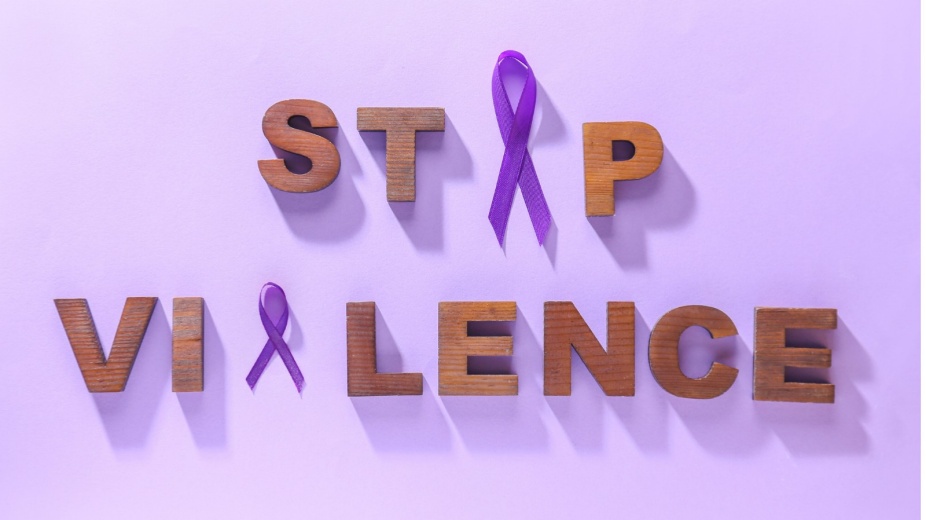
Published October 27, 2022
Blog Author: Judy Torres, Director Domestic Violence, Hispanics United Of Buffalo
Blog Title: Domestic Violence and the Cycle of Violence
Keywords: Social Justice and Social Change, Law and Social Science, Inequality, Human Rights, Civil Rights, Gender, Law, and Society, Family and Family Law
Domestic Violence is difficult for many to discuss, however it is a public health issue that must be addressed. Domestic Violence is non-discriminatory in those that it affects and tends to disproportionately impact already vulnerable groups. Although standards and practices protecting victims have improved in the judicial system, proactive and preventative measures must be taken to ensure that we break the cycle of violence at its conception. A relatively new piece of legislation–known as Erin’s Law–seeks to set up such measures using our public school system as a medium.
Erin’s Law is intended to help children, teachers, and parents in New York State schools identify sexual abuse and provide awareness, assistance, referral, or resource information for children and families who are victims of child sexual abuse. Although the focus of Erin’s Law is on sexual abuse, the curriculums supplied have information that largely addresses all forms of domestic violence. With that in mind, we must not forget that “domestic violence” is not limited to romantic partners; instead, it can, and does, occur between a parent and child, siblings, or even roommates. Whereas “Intimate Partner Violence” (IPV), is abuse or aggression that occurs exclusively in a romantic relationship between current and former partners.
Children are often considered the “hidden” victims in families, and studies have estimated that 3.3 - 10 million children witness domestic violence each year. According to the National Survey of Children’s Exposure to Violence, 1 in 15 children is exposed to (IPV) each year, and 90% of these children are eyewitnesses to this violence. In many instances, these children become victims themselves and are too frightened or reluctant to report abuse in the home because of the threats made by the perpetrator(s), or the possibility of being removed from the home. Coincidentally, the U.S. Department of Health and Human Services has cited research that suggests that as much as 60% of child maltreatment and domestic violence occur simultaneously.
Exposure to domestic violence and child maltreatment trauma can have long-lasting effects on a child’s socio-emotional and neurological development, which can deeply impact them in adulthood. These effects can present themselves in a variety of ways. In some instances, you may have a child become impulsive and aggressive while another child may become withdrawn and anxious. The behavioral changes that stem from DV and childhood maltreatment can affect a child’s ability to successfully navigate romantic, educational, professional, and other social settings. Therefore, recognizing these early warning signs is imperative, not only as professionals but as members of our communities.
Abused children and children exposed to domestic violence are many times not believed, and the abuse goes on for years. Perpetrators will threaten to hurt family members, use the rewards approach, and/or tell them “It’s our secret” to keep the child from telling anyone. In my own experience working with parent clients, many do not realize that their children have been victimized along with them. Remarkably, this is where the cycle of abuse typically begins. Studies show that about one-third of people who are abused in childhood or exposed to domestic violence will themselves become abusers or perpetrators. This strengthens the importance of educating parents and children about childhood sexual, physical, and emotional abuse. Consequently, we must look at policy such as Erin’s Law that seeks to make necessary systemic changes to combat the cycle of violence as we do more than react. Instead, let us look to a future where we take preventative measures to quell this kind of violence.
Related website: Hispanics United of Buffalo
Post 31: Julia Merante: Introducing: Erin’s Law and Preventing Domestic Violence
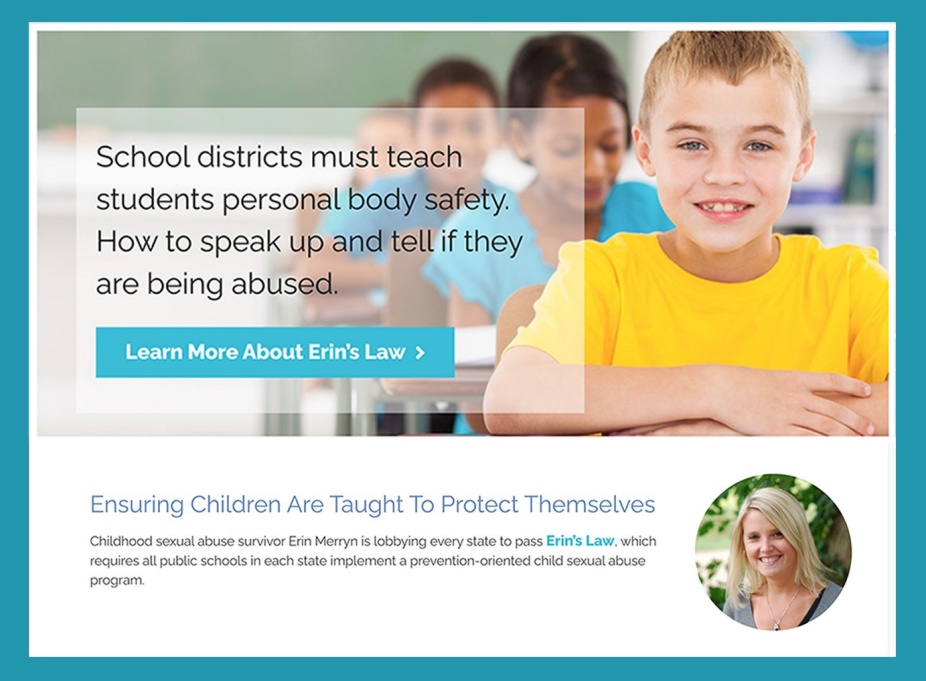
Published October 4, 2022
Blog Author: Julia Merante, 3L, UB School of Law, and, Blog Producer, The Baldy Center for Law and Social Policy
Blog Title: Introducing — Erin’s Law and Preventing Domestic Violence
Keywords: Social Justice and Social Change, Law and Social Science, Inequality, Human Rights, Civil Rights, Gender, Law, and Society, Family and Family Law
Erin Merryn is the founder of Erin’s Law. During her childhood, Merryn suffered from years of sexual abuse at the hands of two trusted males. Galvanized by her own survivorship, Merryn is fiercely crusading across the country and campaigning for all states to mandate an educational program on child sexual abuse awareness and prevention. Erin’s Law requires all public schools to implement a prevention-oriented child sexual abuse program to train school personnel, caregivers, and students in grades preK-12. Merryn’s impassioned advocacy, authorship, and legislative work was inspired by her own adverse experience at a young age.
In one of her books, An Unimaginable Act: Overcoming & Preventing Child Abuse Through Erin's Law, Merryn shares that, in 2013 at a Kansas school, she polled the students, asking if they were taught how to respond to fire drills, how to decline drugs, and how to prevent bullying. Every student raised their hand. Merryn then asked how many of them knew how to identify and disclose sexual abuse – not one student answered yes.
After Merryn’s speech that day, five children reported being sexually abused.
Thirty-seven states have enacted Erin’s Law; however, some have failed to do so effectively and others have failed to do so at all. From neglecting to train teachers to allowing parents an opt-out provision, jurisdictions that – on paper – pass Erin’s Law but do not fulfill it in practice ultimately disserve schools and students. As a result, children then lack critical literacy as they are not taught how to identify or communicate that they have been violated. In New York, for example, the legislature recently passed Erin’s Law in 2019, however, only for grades K-8.
Omissions like these frustrate the purpose and objective of this regulation: to comprehensively education children, parents, and teachers on this topic throughout all primary and secondary grade levels. Therefore, to protect American youth and curtail abuse, states should pass Erin’s Law in its entirety by teaching all preK-12 students, teachers, and parents how to recognize and report abuse.
During October 2022 – Domestic Violence Awareness Month – The Baldy Center will produce blogs and podcasts that engage experts and educators on preventing child abuse. Erin’s Law, alongside other urgent DV topics, will be discussed by UB scholars, community spearheads, and other academics that aim to advance change in this critical area of law and policy.
Related website: Erin's Law.
Julia Merante, Blog Host/Producer
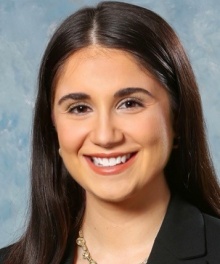
Julia Merante
Julia Merante, a second-year law student at the University at Buffalo School of Law, is host/producer for the 2022-23 Edition of The Baldy Center Blog. Merante is the Vice President of the Jessup International Moot Court, a Human Rights Fellow at Legal Aid, a Student Ambassador, and an Associate of the Buffalo Environmental Law Review Journal. The award-winning poet and essayist graduated SUNY Geneseo summa cum laude with a Bachelors Degree in English, Biology, and Human Development. Merante plans to become a public interest advocate, and then become an educator to continue engaging in important, legal scholarship.
Executive Producers
Samantha Barbas, JD, PhD
Professor, UB School of Law; Director, The Baldy Center
Caroline Funk, PhD
Associate Director, The Baldy Center
